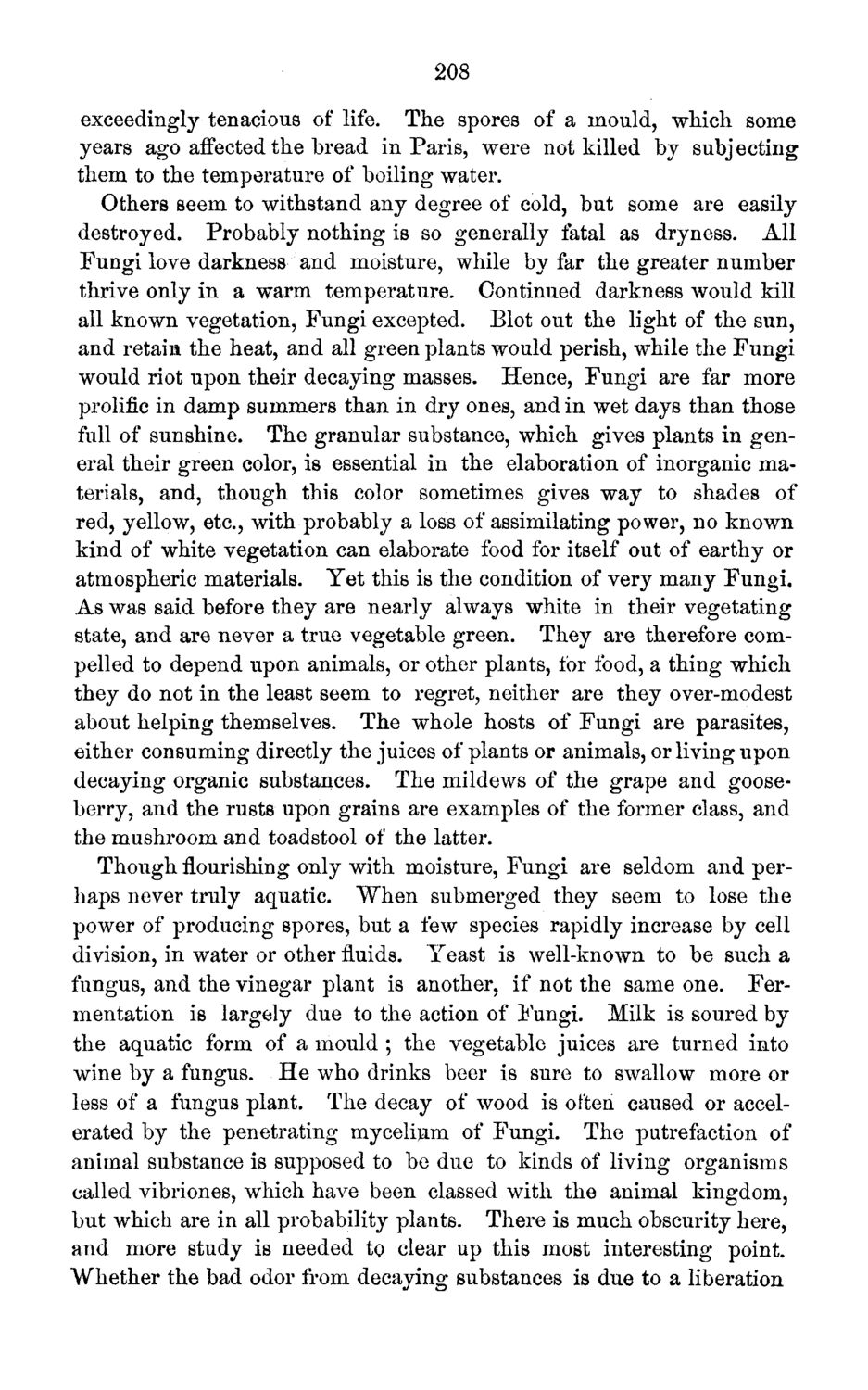| |
| |
Caption: Board of Trustees Minutes - 1871
This is a reduced-resolution page image for fast online browsing.

EXTRACTED TEXT FROM PAGE:
208 exceedingly tenacious of life. The spores of a mould, which some years ago affected the bread in Paris, were not killed by subjecting them to the temperature of boiling water. Others seem to withstand any degree of cold, but some are easily destroyed. Probably nothing is so generally fatal as dryness. All Fungi love darkness and moisture, while by far the greater number thrive only in a warm temperature. Continued darkness would kill all known vegetation, Fungi excepted. Blot out the light of the sun, and retain the heat, and all green plants would perish, while the Fungi would riot upon their decaying masses. Hence, Fungi are far more prolific in damp summers than in dry ones, and in wet days than those full of sunshine. The granular substance, which gives plants in general their green color, is essential in the elaboration of inorganic materials, and, though this color sometimes gives way to shades of red, yellow, etc., with probably a loss of assimilating power, no known kind of white vegetation can elaborate food for itself out of earthy or atmospheric materials. Yet this is the condition of very many Fungi. As was said before they are nearly always white in their vegetating state, and are never a true vegetable green. They are therefore compelled to depend upon animals, or other plants, for food, a thing which they do not in the least seem to regret, neither are they over-modest about helping themselves. The whole hosts of Fungi are parasites, either consuming directly the juices of plants or animals, or living upon decaying organic substances. The mildews of the grape and gooseberry, and the rusts upon grains are examples of the former class, and the mushroom and toadstool of the latter. Though flourishing only with moisture, Fungi are seldom and perhaps never truly aquatic. When submerged they seem to lose the power of producing spores, but a few species rapidly increase by cell division, in water or other fluids. Yeast is well-known to be such a fungus, and the vinegar plant is another, if not the same one. Fermentation is largely due to the action of Fungi. Milk is soured by the aquatic form of a mould ; the vegetable juices are turned into wine by a fungus. He who drinks beer is sure to swallow more or less of a fungus plant. The decay of wood is often caused or accelerated by the penetrating mycelium of Fungi. The putrefaction of animal substance is supposed to be due to kinds of living organisms called vibriones, which have been classed with the animal kingdom, but which are in all probability plants. There is much obscurity here, and more study is needed to clear up this most interesting point. Whether the bad odor from decaying substances is due to a liberation
| |